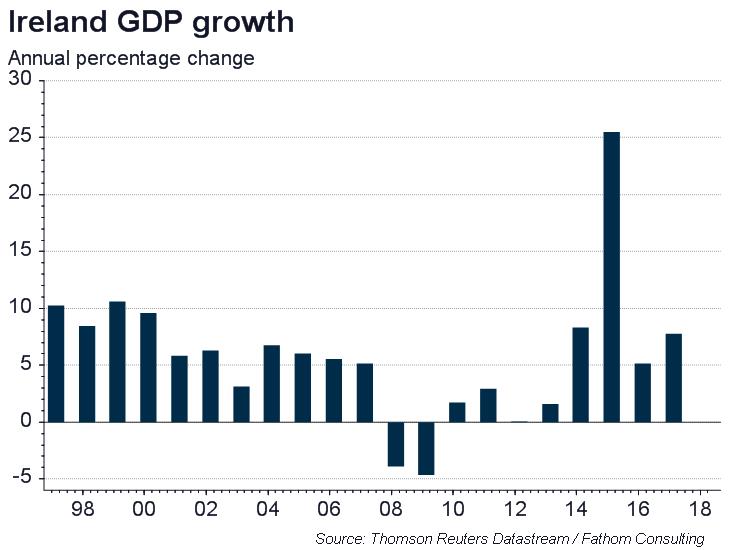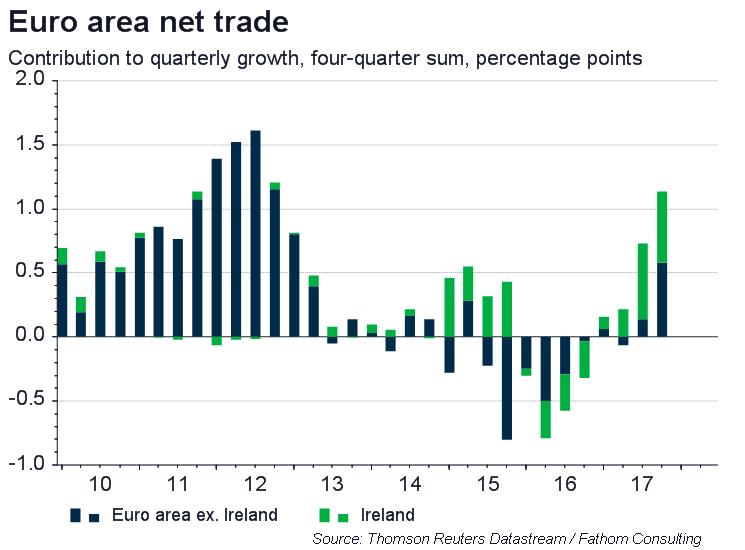A sideways look at economics
In the film Mary Poppins, our heroine has a tape measure in her enormously capacious bag, which she uses to measure her charges, the children of the Banks family. She employs it in the usual way but instead of reporting their height it reports their character. The scene culminates with the children measuring her and finding her “practically perfect in every way”.
However, for the rest of us, a tape measure wouldn’t be a sensible way to measure someone’s character. If you asked: what kind of a man is your father, and got the reply: he’s six feet tall; you’d probably feel that hadn’t really addressed your question. Something similar is true for many official statistics — including GDP — and especially in the case of Ireland.
In a recent conversation that I had with a colleague, I made the unfortunate mistake of stating that I “didn’t believe Irish GDP data”. He (rightly) chastised me for this obviously daft statement. “Irish GDP data”, he told me, “are no more wrong than those of most other countries”.
And, he has a point. Despite it having become customary to discuss Irish data in such a way, there’s no reason to ‘disbelieve’ Irish GDP. Indeed, while there are undoubtedly countries who report distorted economic data (such as China), the CSO (Central Statistics Office of Ireland) isn’t guilty of such an offence.
Verdict: No lie.
But just because they aren’t deliberately misleading, it doesn’t mean the data are 100% accurate. Of course they aren’t; few economic statistics are. There are, obviously, good reasons for this. Mismeasurement, for instance, is a massive problem for GDP across the globe (something we’ve touched on in earlier blogs). And provisional estimates of growth are often wrong too, with revisions typically following a pro-cyclical pattern, in the UK at least. But again, there’s little reason to expect that the Irish numbers are much worse than those of other countries.
Verdict: No damn lies either.
Why then, do Irish GDP figures take such a bashing from economists? Well it’s because of that crazy 25% spike in 2015. That can’t happen in an advanced economy, surely? Well it did and ever since that happened economists have started to ‘distrust’ Irish GDP, often describing it as ‘wrong’.

But there were good reasons for that 25% increase. It’s well documented that a large proportion of 2015’s growth had little to do with increased production by Ireland’s workforce and a lot to do with the re-domiciling of multinational corporates. Under the current GDP guidelines, materials bought and sold by multinationals headquartered in Ireland are pencilled in as imports to and exports from the country, even without them reaching the Emerald Isle.
Irish GDP data therefore provide a misleading picture of the country’s underlying economic activity. But don’t blame the CSO for this — any country’s GDP figures could theoretically have suffered from this problem. In short, the weakness in Irish GDP is really a weakness in the concept of GDP itself, at least in its present form.1
And, the impact of this is not just observed in Irish national statistics; you can pick it up in the euro area aggregates too, with Ireland’s net exports exerting a significant influence on the entire currency bloc’s external position.

Fathom has its own gauge of Irish economic growth — the Measure of Irish National Income (or MINI for short) — to circumvent the shortcomings of GDP data. Why then do we not use this when calculating the size of the euro area’s economy? Well, to do so might be misleading. After all, claiming that Irish GDP overstates the amount of economic activity necessarily implies that GDP understates economic activity in the rest of the world.
We could, and should, attempt to redistribute the distortion in the official GDP data. We might attempt to do this by creating MINIs for every country but this wouldn’t be a simple task. And would it actually benefit us? While the MINI provides a wonderful indicator for the Irish economy, it’s doubtful that it would perform better than GDP in countries where the impact of re-domiciling of multinationals is smaller.2
After all, there are many reasons why GDP remains the king of economic statistics, not least that it’s available in a timely manner and on a broadly comparable basis for a host of countries going back decades.
To recap, we at Fathom ‘believe’ the CSO’s GDP estimates as much as we ‘believe’ any other country’s measurements, we just don’t think it’s a very useful measure. It’s not being calculated in the ‘wrong way’ but, if it’s the level of Ireland’s economic activity that you’re interested in, then GDP’s definitely not calculating the right thing.
To put it another way, even if you could remove all the measurement errors in Irish GDP, then Mary Poppins’ tape measure would still not describe it as a “practically perfect in every way”.
Verdict: It’s a difficult business — damn those statistics.
- To be precise, it was the adoption of the EU’s latest accounting framework (ESA2010) that caused most of this problem. Under the previous framework, imports and exports had to actually cross borders to be counted within national accounts.
- The assumptions underpinning the MINI also rely on GDP being a relatively good approximation for economic activity in other countries. Extrapolating this methodology on a global basis necessarily implies a degree of circularity.